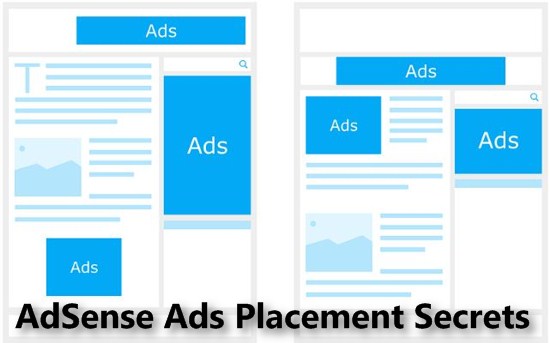10 AdSense Placement Secrets – Optimizing AdSense ad placement on your website is crucial for maximizing your earnings while maintaining a positive user experience.

10 AdSense Placement Secrets
Here are ten placement secrets to help you achieve better results with AdSense:
- Above-the-Fold Placement: Position ads above the fold, meaning they are visible without scrolling. This prime real estate typically gets more user attention and clicks. However, be mindful not to clutter the top portion of your page with too many ads, which can negatively impact user experience.
- Near High-Quality Content: Place ads near your high-quality content. Users are more likely to notice and click on ads that are relevant to the content they are currently engaged with. Ensure that ad placement complements your content seamlessly.
- Blend Ads with Content: Make your ads blend harmoniously with your website’s design and color scheme. Use custom ad styles to match the fonts and colors of your site. While blending, ensure the ads are still distinguishable from your content to comply with AdSense policies.
- Use Responsive Ads: Opt for responsive ad units that adapt to different screen sizes and devices. These ads can fit various layouts, ensuring that your ads look good on both desktop and mobile devices.
- In-Content Ads: Insert ads within your content, such as in the middle of an article. These native-style placements can improve click-through rates (CTR) as they are part of the user’s reading flow. However, maintain a balance to avoid disrupting the reading experience.
- Sidebar and Widget Areas: Utilize sidebar and widget areas for ad placement. These areas often attract user attention and can be effective for displaying both display and link ads.
- Horizontal Ad Units: Experiment with horizontal ad units just below the header or within content sections. Horizontal banners can catch the eye and encourage clicks.
- Sticky/Floating Ads: Consider sticky or floating ad units that stay visible as users scroll down the page. These ads can be effective for maintaining visibility and generating clicks.
- Match Ad Sizes to Content: Select ad sizes that match your content layout. Common sizes like 300×250, 336×280, and 728×90 tend to perform well. Use Google’s Ad Balance tool to find the optimal ad sizes for your site.
- Regularly A/B Test: Continuously A/B test different ad placements to determine which configurations generate the best results. Use Google Analytics and AdSense reports to analyze the performance of different ad positions, and adjust your strategy accordingly.
Remember, the effectiveness of ad placement can vary depending on your website’s layout, niche, and audience. Regularly monitor your ad performance and be open to experimentation to find the optimal ad placements that work best for your site while respecting AdSense policies and maintaining a positive user experience.
![]()